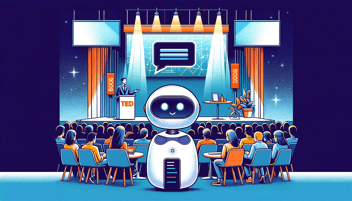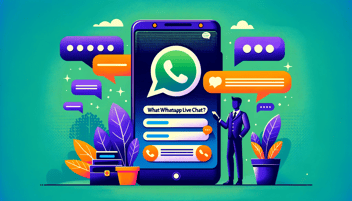Chatbots are everywhere these days. From customer support to education to entertainment, chatbots are being used to automate tasks and provide a more personalized experience for users.
Real-life examples of chatbots in use today:
1. Customer support:
Chatbots can be used to provide 24/7 customer support, answer frequently asked questions, and troubleshoot problems. For example, the Domino's chatbot allows customers to order pizza, track their order, and get help with their account.
2. Education:
Chatbots can be used to help students learn new concepts, practice their skills, and get personalized feedback. For example, the Duolingo chatbot helps students learn new languages by providing interactive exercises and conversation practice.
3. Entertainment:
Chatbots can be used to create games, stories, and other interactive experiences. For example, the Replika chatbot is a friend simulator that can chat with users about their day, offer advice, and even tell stories.
4. Healthcare:
Chatbots can be used to provide patients with information about their condition, answer questions about their medication, and schedule appointments. For example, the Babylon Health chatbot can assess a patient's symptoms and provide personalized recommendations.
5. Finance:
Chatbots can be used to help customers with their banking needs, such as checking their balance, transferring money, and paying bills. For example, the HDFC Bank chatbot allows customers to open accounts, apply for loans, and get help with their credit cards.
These are just a few examples of the many ways that chatbots are being used today. As chatbot technology continues to develop, we can expect to see even more innovative and creative uses for chatbots in the future.
Here are some examples of actual chatbots in use today:
Customer support:
Domino's, HDFC Bank, and Sephora all use chatbots to provide customer support.
Education:
Duolingo, Quizlet, and Khan Academy all use chatbots to help students learn.
Entertainment:
Replika, Botnik, and Mitsuku are all chatbots that can be used for entertainment purposes.
Healthcare: Babylon Health, Buoy Health, and K Health all use chatbots to provide patients with healthcare information and assistance.
Finance:
HDFC Bank, ICICI Bank, and Axis Bank all use chatbots to help customers with their banking needs.
In addition to these specific examples, chatbots are also being used by businesses and organizations of all sizes in a variety of industries. For example, chatbots are used to answer questions about products and services, generate leads, and schedule appointments.
More examples of actual chatbots:
- Mya is a chatbot used by HR departments to answer employee questions and provide support.
- Nightbot is a chatbot used by Twitch streamers to moderate chat and automate tasks.
- Mona is a chatbot used by journalists to research stories and fact-check information.
- Bard is a chatbot developed by Google AI that can generate text, translate languages, and answer questions in an informative way.
Chatbot technology is rapidly evolving, and we can expect to see even more innovative and creative uses for chatbots in the future.
Benefits of using chatbots
Chatbots offer a number of benefits, including:
1. Convenience:
Chatbots are available 24/7, so users can get help or information whenever they need it.
2. Accessibility:
Chatbots can be accessed from a variety of devices, including smartphones, tablets, and computers.
3. Personalization:
Chatbots can be personalized to meet the individual needs of each user.
4. Scalability:
Chatbots can be scaled to handle large volumes of traffic, making them ideal for businesses with high customer demand.
How to choose the right chatbot for your needs
If you are considering using a chatbot for your business or organization, there are a few things to keep in mind:
Identify your goals:
What do you want your chatbot to achieve? Do you want it to provide customer support, answer questions about your products or services, or generate leads? Once you know your goals, you can choose a chatbot that is designed to meet those needs.
Consider your audience:
Who will be using your chatbot? What are their needs and expectations? Once you know your audience, you can choose a chatbot that is designed to appeal to them.
Look for features that are important to you:
Do you need a chatbot that can handle complex conversations? Do you need a chatbot that can integrate with your CRM system? Make a list of the features that are important to you and then choose a chatbot that has those features.
Once you have chosen a chatbot, you will need to train it to understand your business and your audience. You will also need to create content for your chatbot, such as FAQs, product descriptions, and conversation scripts.
Conclusion
Chatbots are a powerful tool that can be used to improve customer service, education, entertainment, healthcare, and finance. If you are considering using a chatbot, be sure to identify your goals, consider your audience, and look for features that are important to you.




